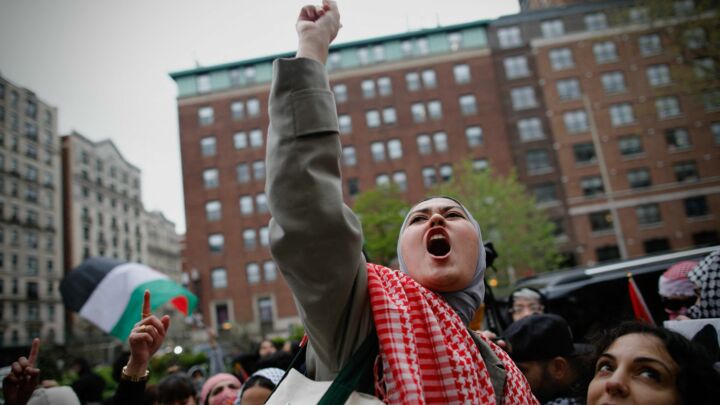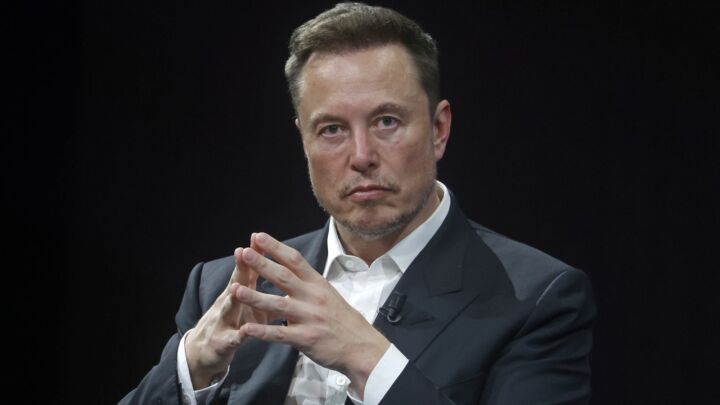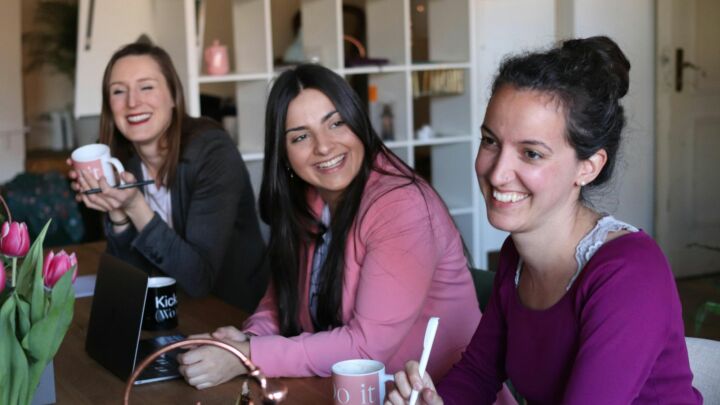Why artists shouldn’t accept state funding
An illustrator argues that the cost of government funding - the loss of artistic independence - is too high a price to pay.

Ceri runs an arts charity in London. For years, she’s applied for government grants to fund her work, but not any more. ‘You can’t do anything interesting or original’, she says. ‘Everything has so many strings and requirements attached about involving the community or helping people stop smoking or whatever, that there’s no room to do anything else.’
Conrad, a filmmaker in Birmingham, agrees. ‘Even after you’ve filled in a million forms to get the money’, he tells me, ‘you then have to spend more time filling out forms to prove you’re spending it correctly. I haven’t the patience.’ His filming partnership is presently on hold because his partner is more interested in the money, ‘and that means nothing we’ve made so far says anything’, he complains.
Artists have always had to work around their patrons’ whims and political agendas. However, New Labour’s social agenda is more intrusive than the most autocratic client could ever be. In the twenty-first century, the British state has unprecedented power to intrude into our personal lives, and does so in subtle and pervasive ways. We have anti-social behaviour orders (ASBOs) – allowing people to be locked-up for non-criminal behaviour; the ubiquity of closed-circuit television (CCTV), which seems to be omnipresent ‘for our safety’; smoking bans; lunchbox inspections; police checks on all adults working with children; mentoring programmes for prospective parents; and jail terms for saying the wrong thing in public – all in the name of ‘supporting the community’.
New Labour’s political outlook, reflected in its arts agenda, is rooted in a chronic insecurity about the public’s alienation from the political process and a nervousness of what we might get up to, unsupervised. The role of artists, according to this mindset, is to help government ‘connect’ and ‘engage’ with (or in other words, infiltrate) the lives of ordinary people. John Holden, government adviser and author of a recent report on the arts for the think-tank Demos, explained the idea in a speech earlier this year. At a seminar of invited artists and ‘arts practitioners’ organised by an arts quango and coyly entitled ‘Can Policy be Artist-Led?’, he explained that ‘the world has changed… governments have difficulty trying to engage with the public. They’re very good at engaging with business, with big organisations, but they’re very bad at engaging with individuals.’
Labour’s entire arts policy is designed to address this problem. As such, every single person who works in the state-funded arts sector, from little local authority graphics teams to the curators of major public galleries, is expected to fit their work around Labour’s agenda of integrating the ‘socially excluded’. Art works on us as individuals, touching our deepest feelings. So it makes sense for New Labour to judge an artist purely on their ability to help the government worm its way into the lives of the general public. For example, New Labour has assumed that black people will be better able to help it get closer to the ‘black community’, and ethnic diversity schemes reflect this.
There is a valuable discussion to be had about the effect that this pernicious manipulation of arts funding has both on the arts and on wider society. But for me, as an artist, there is a more pressing question: what should artists do?
Were we living in a society where the arts were under attack and artists starved in garrets, there might be a case for artists to claw as much as they can out of the state. Today, there is no justification for it financially; even less from the viewpoint of artistic survival.
A comparison between the work of designers and artists is useful here. A designer only gets state support because the fundamental value of their work can be judged objectively. With fine artists this is impossible, since art deals with individual feelings and emotions and its direct value is unquantifiable. The state can only judge artists’ work in terms of how it fits in with government agendas. This is like trying to measure how blue something is with a ruler.
The result is a burgeoning fellowship of ‘artists’ and ‘arts practitioners’ who owe their careers entirely to the state and who survive by ticking the right boxes in return for accommodating to the government’s propaganda requirements. For all Tessa Jowell’s fine words about the unique, transcendent value of art, New Labour will accept an awful lot of rubbish from artists so long as the results send the right ‘message’ about smoking, drinking, child abuse, internet porn, recycling, or any other current government obsession – even better if the process involves sufficient members of the public, from nursery upwards.
Because of this complicated and compromising arrangement, thoughtful art graduates should beware of applying for government funds to do their art.
Indeed, perhaps the time is long overdue, as Josie Appleton suggests in her essay ‘Who Owns Public Art?’, to restart the habit of public subscription. As she says, ‘this would mean artists appealing to the public to support their work, rather than just pressing the right buttons at the Arts Council’.
Artists elsewhere in the world manage to survive without handouts from Big Brother. Individual patrons and commissioners still exist – with their own foibles and fetishes, admittedly, but without the same scope for using artists as propaganda tools.
Natalie has found she can survive even in such a select market as stained glass, with determination. ‘I started off doing straightforward commissions for people who told me exactly what they wanted, and eventually I began to get more and more ones where I could do the kind of work I want to do’, she explains. Young illustrators who want to be artists – free to make what they want and get paid for it – should remember that all they need at the outset is for someone to pay them to create images. Likewise, fine art graduates should welcome the opportunity to creatively design for the real world, as an integral part of their artistic practice.
It may be harder to make great art in a society where nervous, mistrustful governments encourage intolerance and self-censorship. But it is certainly still possible to make good art and to do it without special help.
Today, a growing number of British artists kickstart their careers while they wait tables or do boring admin in a bank, by entering competitions, performing at festivals, going to openings and self-publishing their work in limited editions. They sell their work in design shops such as London’s Magma, submit it to magazines such as Nude, or stick it on YouTube. Jamie Reid, David Shrigley, Banksy and others got a start to wealth and fame by bypassing the funding system altogether and just putting their work out to be seen.
This proactive strategy is surely a more positive career path for tomorrow’s artists than writing government funding applications – plus, it’s far less boring and immeasurably more creative than filling in forms.
Jan Bowman is an artist and illustrator. View her website here. A longer version of this article has been published on Culture Wars.
To enquire about republishing spiked’s content, a right to reply or to request a correction, please contact the managing editor, Viv Regan.








Comments
Want to join the conversation?
Only spiked supporters and patrons, who donate regularly to us, can comment on our articles.